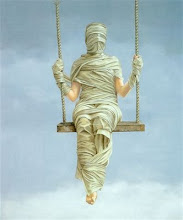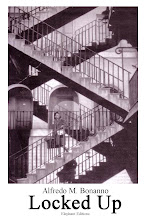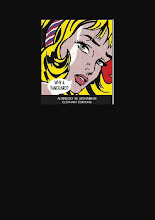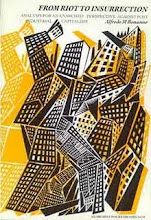An anarchist who based her revolutionary intervention in social struggles precisely on her being a woman was Emma Goldman, and a clear testimony to this is to be found in her writings.
The obstacles encountered by Emma in her thirty years of anarchist propaganda as well as the polemics she supported still exist in the revolutionary movement today, and concern no small part of the struggles for women’s liberation.
When Emma clashed with the quite evident male chauvinism of wellknown anarchists who had often spent their whole lives in the struggle for the social revolution, and argued with men like Most or Kropotkin, she did so first of all as a woman, refusing the marginal role that these men were imposing on her, almost unconsciously. When she brought the sexual question to the fore, pointing out the discrimination that woman is subjected to and the resulting social consequences very clearly, she often caused a scandal and raised suspicion within the revolutionary organisations themselves.
This situation still largely persists, or rather, with the sharpening of the thematics and deepening of analyses it has become more acute, radicalising in incomunicable positions in a fictitious clash between male and female comrades, leading to a great deal of incomprehension.
...
Basically, it seems to us that the revolution women are struggling for cannot be reached through an authoritarian perspective, in the sense of women being in command of the future power ‘elite’ (guiding party of the proletariat) instead of men. To think like this would be to merely repeat the errors of the struggle for emancipation carried out by women in the past that lead them to enter professions that had previously been reserved for men, as well as leading them into Parliament and to voting; but did not take them one inch along the road to freedom and the feminist revolution. Not just that. Starting off handicapped by centuries and centuries of ‘gineceo’, they had to make superhuman efforts to make themselves equal with the ‘privileged’male subjects, only to end up contributing to the production of capitalist wealth.
One could object to all this with the discourse of the progressive evolution of the struggles, the maturation of the exploited masses and so on, but that would not change the basic problem: the feminist revolution cannot be built on the authoritarian model, it must set itself out in a qualitatively different way, attacking the centres of male power, not in order to substitute them with another (female) one, but eliminating them completely. In this perspective it seems to us that feminist revolution and anarchist revolution must coincide.
The final aim, however, cannot subtract women (and anarchists) from involvement in the partial structure, a proper analysis of this structure and intervention in the revolutionary sense.
In the first place, escaping from the illusion of quantity. In fact, what were the contrasts between Goldman and Kropotkin or Most, and what are the disagreements between many female and male comrades today? Precisely in the claim of the one or the other to count themselves, to measure their intervention capacity through the number of militants, according to the party schema. Basically, Most had the German-speaking anarchist movement in the United States in his hands. He knew that many German comrades, both due to their religious extraction as well as the duality natural to man who finds it difficult to escape an evaluation of the woman based on sex, did not like female comrades (who are women after all) to get involved in certain arguments (residual of respectable hypocrisy). Hence the contrast with Goldman and his concern that she might ‘discredit’ the movement, i.e. could cause the number of members to decrease.
Whoever enters the quantitative logic is struggling in a revolutionary perspective, but with inadequate means. He who is constantly measuring, ends up fixing an objective scale of approach that he is not prepared to question. His point of reference is the movement of the exploited in general, with the ideas that this possesses at a given moment. Now, as far as the problem of woman is concerned, there is no doubt that the movement of the exploited as a whole has quite retrograde ideas on the subject (woman as sex object, as domestic angel, at best as companion at work). Consequently, whoever decides to enter the quantitative logic takes it upon themselves to influence these ideas with political propaganda and action, but, at the same time cannot keep a check on it, so cannot fail to ‘suggest’ to the (woman) comrade to ‘re-enter the ranks’). Anarchists are no different from Marxists in this aspect. Even the female comrades who enter the quantitative logic (building the movement) cannot act otherwise (if they really want to build something).
So,it seems to us that a good part of the efforts of the feminist movement is quite rightly aimed at repelling the chauvenistic pulsions of male comrades. It should also be aimed at analizing the objectives of the movement and its structures however, in order to avoid falling into the contradiction ‘make room for me’.
Then there is the other side of the question. If the feminist revolution cannot fail to be anarchist, it follows that the methodology of intervention cannot fail to be similar, if not the same. And how do anarchists see themselves concerning the mass? And how do women place themselves concerning the same problem?
Anarchists do not present themselves as holders of the truth, as a guide, or as revolutionary memory. In fact, they do not even place themselves ‘before the masses’, they belong to the mass. When they give significance to some organisation of theirs, they do it in order to ‘deepen’ the revolutionary event because they are forced to approach the revolution gradually, they have a strategic need for the struggle against power. They must not fall into the quantitative equivocation. It is not the big anarchist movements that determine liberatory-revolutionary events. An enormous number of conditions determine the revolutionary event, anarchists are but one component, the one that immediately addresses itself towards the liberatory deed that could be put aside and killed by an interested minority.
The same could be said for women. If they place themselves before the mass as women alone, they cannot fail to discriminate between two distinct groups of different sex within the mass. In this way ‘all women’ come to have a revolutionary potential, which remains to be seen. In the same way, all workers become part of an hypothetical revolutionary potential, even policemen, judges, politicians, mafiosi. Of course, starting from a quantitative logic this solution is very convenient, makes the woman feel strong, makes her part of a ‘great mass of sisters’, but certainly doesn’t take her towards liberation. Not only, but starting solely from the condition of being a woman, this condition of concept of ‘truth’ becomes linked and the woman becomes carrier of truth, which the other half of the mass (the males) must be made to understand, by any means possible.
On the other hand, if the woman sees herself as an anti-authoritarian revolutionary, renounces the perspective of taking over anything in order to crush the other sex, perhaps even more than she herself has been crushed until now, but moves all her involvement in the liberatory and revolutionary event, inserting herself within organisational structures that, starting from the feminist matrix, she can valorise thematics and motivations that put the problem of woman in first place. Then it will no longer be a question of dividing the world into two large slices, but of showing it to be divided as it is by capitalist exploitation, always denouncing this division more, exasperating it, until the day of the definitive liberation and abolition of every division, including that based on sexual differences.
That said, we are not trying to suggest that women should ‘soften up’ the violent charge that is exploding within them as they take consciousness of the double exploitation they suffer, in order to enter ‘purified’ into the ‘revolutionary movement’. Unfortunately, even between comrades struggling for the revolution, making efforts in the direction of liberation, but precisely for this reason are not struggling ‘with equal rights’alongside the comrades (men). Unfortunately, even between comrades struggling for the revolution, who are making efforts in the direction of liberation,but who precisely for this are not ‘freed’, residuals of prejudice and discrimination albergano that are not easily eradicated. The woman feels all that and acuisce her struggle. But this situation is a consequence of capitalist exploitation, that restricts woman within a precise ghetto of exploitation: the ghetto of social discrimination. Woman comes to be valued as a sexual object. Whatever she does, no matter what activity she carries out, in whatever field she involves herself, her sex or rather that which men think her sex to be, arrives before her. This cannot fail to wound the woman and lead her to the conscience that wants to reach the feminist revolution, must, before anything else, knock down this barrier.But the knocking down of this barrier cannot happen without the contemporaneous knocking down of other barriers.The woman will always be considered a sexual object so long as a world divided into classes exists, because by reducing her to an object she is enclosed in the ghetto, with that same process of criminalisation that comes to be adopted with the other dangerous minorities: prisoners, the alienated, etc.
And the great charge of revolutionary violence comes from her consciousness of feeling herself closed within the ghetto.With a not dissimilar process, prisoners today are gaining consciousness of their situation as ghettoised and are exploding in revolts that are contained with more and more difficulty. Also here we are coming up against not easily avoidable dangers. One runs the risk of emphasizing the ‘prisoner’ only because he is an human being restricted inside four walls. This, it seems to us, the first moment of growth of the movement, the moment in which, precisely, the movement objectifies itself and does it with the most macroscopic means it has at disposition: in the case of prison, prison as a building, as total institution; in the case of the woman, sex, as a net discriminant between two different worlds, that of the man (dominator) and the woman (dominated).
But then the movement grows. It leaves the period of infancy in which it was recognisable through the most immediate characteristic, and develops its own revolutionary approfondimento. In this way the prisoners realise that the struggle against the total institution can only have outlets if it links itself to that other total institution, the society of exploitation, and that the persistence of the latter would always and continually prevent the destruction of the first. And realising that developing a class analysis, they individuate enemies and separate them from the allies, they organise as a revolutionary minority, choose objectives and the means for reaching them. Only then are they really dangerous for power, and only then the repression becomes ferocious, because it is no longer possible to draw them into the trap of reduced sentences, bail, amnesty, prison reform; transformisms of power that means, this way, to transfer the ghettoised from a smaller ghetto into a bigger one.
And the feminist movement is also growing, putting aside its discriminant on the basis of sex, where all its efforts were addressed at the beginning. The struggle against the other sex only has reason to be when inserted within the struggle against the boss, against the institution that defends the boss, against the mechanism he has created to perpetuate exploitation. In this wider perspective, the feminist struggle also becomes fundamental, forcing everybody to become aware of a problem that (for the privileged) appears secondary. Only when this link is made will the feminist movement appear in all its dangerousness for power; and that is because, during that phase it will not ask for anything specific ‘for woman’, but will ask for all the exploited: a totally revolutionary demand, as only who has undergone the worst of all exploitation can make. And against the rage of women it will not be easy for power to find an accomodating solution.
skip to main |
skip to sidebar

Some writings of Alfredo Maria Bonanno in English, or almost

Alfredo Bonanno was arrested on October 1st 2009 in Greece, accused of concourse in robbery. With him, anarchist comrade Christos Stratigopoulos.
Here are a few translations and part translations of a small portion of Alfredo's writing. This is a work in progress, many of the translations are as yet incomplete. Open links to find more of Alfredo's work.
Alfredo Bonnano Released
Nov. 22 Alfredo Bonnano was sentenced to 4 years imprisonment (which practically means that with the time served so far and the fact that he is over 70years old HE IS RELEASED
Christos Stratigopoulos (who took responsibility for the action)
was sentenced to 8 years and 9 months with the Greek law will probably be released at the end 2011
BY ANY MEANS NECESSARY
LINKS
click on any of these labels to read text
- "Community" sickness
- 1981 - Editorial
- A Critique of Syndicalist Methods
- A few notes on Sacco and Vanzetti
- A few notes on the revolutionary movement in Italy
- A little man in Singapore
- A million jobs
- A question of class
- Affinity
- After Marx autonomy
- Albania Laboratory of Subversion (Introduction)
- Anarchism and the national liberation struggle
- Anarchists and action
- AND WE WILL ALWAYS BE READY TO STORM THE HEAVENS AGAIN (Against amnesty)
- ANTI-INSTITUTIONAL MOVEMENT
- Are we modern?
- Armed Joy
- ARMED STRUGGLE. SOME REFLECTIONS.
- Autonomous base nuclei
- beyond syndicalism
- Beyond workerism
- But what is the imaginary?
- Class War
- Comiso - Organizational document of the self-managed leagues
- Considerations on illegality
- Dissonances (Introduction)
- Elephant Editions 1986
- Excluded and included
- Farewell to claiming
- Feral Revolution (Introduction)
- FICTITIOUS MOVEMENT AND REAL MOVEMENT
- For an Antiauthoritarian Insurrectionist International - Proposal for a debate
- From riot to insurrection
- From the centre to the periphery
- Good technology
- Guerilla Extraordinary
- Habits and idols
- Hegel
- I know who killed chief superintendent Luigi Calabresi
- Illegality
- Illness and capital
- Informal organisation
- Insurrection
- Internationalism
- Introduction to Sabate
- Introduction to Anarchism and Violence
- Introduction to Bratach Dubh English edition of Malatesta's Fra Contadini
- Introduction to Insurrectionalist Anarchism
- Introduction to Strange Victories
- Introduction to The Conquest of Bread
- Involuntary aspects of voluntary work
- Let's destroy work
- LET'S DESTROY WORK. New introduction
- Let's keep our feet on the ground please
- Lightening Conductors and Stand-ins - more shots of non-news
- Lightning Conductors and Stand-ins
- Lightning Conductors and Stand-ins (cont.)
- Locked up
- Looking forward to self-management
- Loss of language
- More on internationalism
- National Liberation Struggle
- nineteen years on
- No more crises
- Non-news about drugs
- Non-news about racism
- Ode to the Uniform
- On Feminism
- One's life on the line
- Order and chaos
- Otto Ruhle (Introductory Note)
- OUR ROLE IN THE PRESENT CONFLICT
- Palestine mon amour
- Pantagruel anarchist review
- Pinelli
- Prison and Prisoners’ Struggles - Introduction
- Propulsive Utopia
- Quality and the factory
- Restructuring Capital and the new democracy
- Revolution - Violence - Antiauthoritarianism
- REVOLUTIONARY VIOLENCE
- Science and the social revolution
- Self-management
- Severino Di Giovanni in Argentina 1923-1931 by Osvaldo Bayer
- Social banditry
- SOME NOTES -
- Space and Capital
- Stirner
- Stop the City? From information to attack
- Strategy and Methods
- Streamlined production
- The "end" of the crisis
- The aesthetics of anarchism
- The anarchist tension
- The area of autonomy and the anarchist movement in Italy
- The armed wing of science
- The Cruise missile base at Comiso can be prevented
- The ethical bank
- The insurrectional project
- THE LANGUAGE OF TECNICS -
- The logic of insurrection
- The moral split
- THE NECESSARY DESTRUCTION -
- The priority of practice
- The refusal of arms
- The revolutionary project
- The revolutionary struggle
- The significance of an insignificant event
- The struggle for self-managed social space
- The tyranny of weakness
- The whole and the part
- The young in a post industrial society
- Theory and action
- Towards anarchist antimilitarism
- TOWARDS THE GENERALISATION OF ARMED STRUGGLE
- TRANSFORMATION IN THE WORLD OF WORK AND SCHOOL -
- TRUTH -
- Unemployment in Italy - How come everything doesn't explode?
- Untitled
- Violence and non-violence
- What are anarchists
- What can we do with anti-fascism?
- Why a vanguard?
- Why Insurrection
- World domination in a few words











